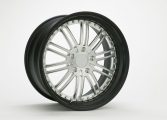American Classic Cars: A Comprehensive Guide

Introduction:
American Classic Cars hold a special place in the hearts of car enthusiasts around the world. These vehicles are an epitome of style, power, and timeless appeal. In this article, we will delve into the world of American classic cars, exploring their history, types, popularity, and the factors that make them stand out.
1. Overview of American Classic Cars:

American classic cars, also known as vintage cars, embody the essence of American automotive craftsmanship from the mid-20th century. They are typically defined as vehicles produced between the 1920s and 1970s, characterized by their iconic designs and iconic features. These cars evoke a sense of nostalgia, capturing the spirit of a bygone era.
2. Types and Popularity of American Classic Cars:
American classic cars come in various types, each with its unique characteristics and fan base. Some notable types include muscle cars, hot rods, convertibles, and luxury cruisers. Muscle cars like the Ford Mustang and Chevrolet Camaro are renowned for their powerful engines and aggressive designs. Hot rods, on the other hand, are modified versions of classic cars, customized to enhance performance and style.
In terms of popularity, certain American classic cars have achieved cult status. The Ford Mustang, Chevrolet Corvette, and Chevrolet Bel Air are among the most beloved and sought-after models by collectors and enthusiasts alike. These cars have become symbols of American automotive excellence and continue to captivate audiences worldwide.
3. Quantitative Measurements of American Classic Cars:
Providing quantitative measurements for American classic cars can be challenging due to the vast array of models and variations. However, some key metrics can be used to assess their value and performance. These include engine displacement, horsepower, acceleration times, and top speeds. Additionally, market demand and auction prices can provide insights into the value and desirability of specific models.
4. Discussion on the Differences between American Classic Cars:
Despite sharing a common heritage, American classic cars differ in terms of design, engineering, and intended purpose. Muscle cars prioritize power and performance, featuring large engines and aggressive styling. Luxury cruisers, on the other hand, focus on comfort and elegance, offering plush interiors and smooth rides. Hot rods showcase personalized modifications, reflecting the unique tastes of their owners. Understanding these differences allows enthusiasts to appreciate the diversity within the world of American classic cars.
5. Historical Overview of Advantages and Disadvantages:
American classic cars have their own set of advantages and disadvantages. In their heyday, these vehicles were known for their robust construction, expressive designs, and powerful engines. However, they often lacked modern safety features and fuel efficiency. Today, with advancements in restoration techniques and aftermarket upgrades, many of these disadvantages can be mitigated. Restored classic cars offer the best of both worlds, combining vintage aesthetics with modern comfort and reliability.
6. Decisive Factors for Car Enthusiasts:
When it comes to purchasing a classic car, several factors influence the decision-making process for enthusiasts. These include the condition of the vehicle, rarity, provenance, authenticity, and historical significance. Additionally, factors such as originality, performance modifications, and personal preferences also play a role. Owning a classic car is as much about the emotional connection as it is about the practical aspects, making these factors crucial considerations.
Conclusion:
American classic cars hold an irreplaceable position in the automotive world, representing a golden era of American manufacturing and design. Their allure continues to captivate enthusiasts and collectors, who appreciate the craftsmanship, elegance, and power these vehicles embody. Whether it’s the iconic muscle cars or the timeless luxury cruisers, American classic cars will always be revered for their contributions to automotive history.
[INSERT VIDEO HERE]
Sources:
– ClassicCars.com
– Hemmings.com
– Barrett-Jackson.com
– Hagerty.com
















































